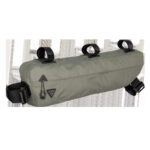For those new to the motorcycle world, especially within the Kawasaki lineup, the distinction between “sport bike” and “supersport bike” can be unclear. Often, the terms are used interchangeably, but they represent different categories of motorcycles designed for varying purposes and riding styles. This article clarifies the key differences, focusing on Kawasaki Sport Bikes to help you understand which type best suits your needs.
Supersport bikes, like the Kawasaki Ninja ZX-6R, ZX-10R, and ZX-14R, are essentially race bikes adapted for street use. Their primary design focus is track performance and exhilarating rides on twisty roads. This translates to a more aggressive riding posture. You’ll find yourself leaning further forward, placing more weight on your wrists. This position enhances control and aerodynamics at high speeds and during sharp cornering, crucial for track riding and spirited canyon runs. However, this aggressive stance can become tiring on longer journeys or daily commutes.
Sport bikes, on the other hand, like the Kawasaki Ninja 650 and Ninja 400, offer a more balanced approach. While still sporty in nature, they prioritize rider comfort for longer distances and everyday usability. They typically feature a more upright riding position, reducing strain on your wrists and back, making them more comfortable for touring and daily riding. Although generally less powerful than their supersport counterparts, they provide ample performance for most riders and riding situations. Sport bikes are also often designed to accommodate a passenger more comfortably and handle additional weight, making them more versatile for different riding needs.
Let’s consider a direct comparison between the Kawasaki ZX-6R (supersport) and the Ninja 650 (sport bike) to highlight the key differences:
- Engine Configuration and Power: The ZX-6R boasts a high-revving inline-4 engine, delivering significantly more horsepower (around 50-60HP more) than the Ninja 650’s parallel-twin engine, despite the 650 having a larger displacement. This power difference is due to the fundamental engine design principles, with inline-4 engines generally producing more top-end power suitable for racing.
- Weight: Supersport bikes like the ZX-6R are built with weight reduction in mind, utilizing lighter materials and components. The Ninja 650 is approximately 40kg heavier, contributing to its more stable and planted feel, especially with a passenger.
- Passenger Comfort: Supersport bikes are not designed for passengers. The rear seat is minimal, and the riding position is very uncomfortable for a pillion. Sport bikes are generally more accommodating for passengers, offering better seating and ergonomics for two-up riding.
- Components and Features: Supersport models typically feature higher-spec components, including advanced suspension, electronics, brakes, and tires, all aimed at maximizing track performance. Sport bikes utilize more standard components to balance performance with affordability and everyday usability.
- Insurance Costs: Due to their higher performance and perceived risk, supersport bikes generally incur significantly higher insurance premiums compared to sport bikes.
In conclusion, choosing between a Kawasaki sport bike and a supersport bike depends entirely on your riding priorities. If your focus is primarily on track days, aggressive cornering, and ultimate performance, a supersport like the ZX-6R is the clear choice. However, if you value daily comfort, versatility for commuting and longer rides, and a more forgiving riding experience, a sport bike like the Ninja 650 or Ninja 400 will be a more practical and enjoyable option. Consider your typical riding style and needs to make the best decision for your next Kawasaki motorcycle.

